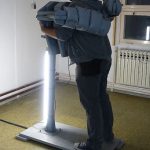The palace has changed a series of owners. The first one was Ban Petar Zrinski. Then, after the collapse of his famous conspiracy, it was sold to Baron Čikulini, and in the middle of the 17th century, it was bought by Ivan Drašković Trakošćanski. After that, it was taken over by the Sermage family, and after the marriage of the daughter of Petar Troil Sermage the palace at St. Mark’s Square was taken over by Baron Ivan Emilijan Kulmer. He was the last private owner before the Banski Dvori palace became a place where main political decisions are made. Today it is the headquarters of the Croatian government, reports Večernji List on April 2, 2019.
Ivan Kulmer is most likely the one who should be credited for the artwork that had been hidden for decades under the red-gold wallpaper of the Ban Jelačić Room, where the Croatian government usually meets. It was discovered last summer when the restoration of the room began. Workers have found valuable frescos after they removed the wallpaper, and the restorers have since discovered unknown details.
The analysis determined that the artwork dates back to the late 18th or early 19th century when Kulmer was the owner of the building. They discovered that the frescoes were made with the secco technique, but the author is still unknown. At least for now, says the government, adding that it is “a Central European painter”.
After the completion of all the works, Culture Minister Nina Obuljen Koržinek will sit in front of the frescos, as per usually seating chart. The murals will no longer be covered, Prime Minister Andrej Plenković announced. The government had to hire experts who are now working on their renovation.
“Damage has been noticed, such as surfaces damaged when the channels for electrical installations were put it. In some places, the painted and plastered layers of the walls were missing,” says the government. Before the works began, restorers had to create a fresco study with analysis and comparative examples to reconstruct the missing parts. Laboratory tests have been carried out, while the entire hall has also been documented with photographs and 3D laser scanning.
Currently, the experts are painting the missing parts of the composition. The frescoes are located on the northern wall and a part of the eastern wall of the room. They show a land landscape with trees, and there is the sea coast in the distance, with towns and building further away.
Translated from Večernji List (reported by Petra Balija).
More art news can be found in the Lifestyle section.









